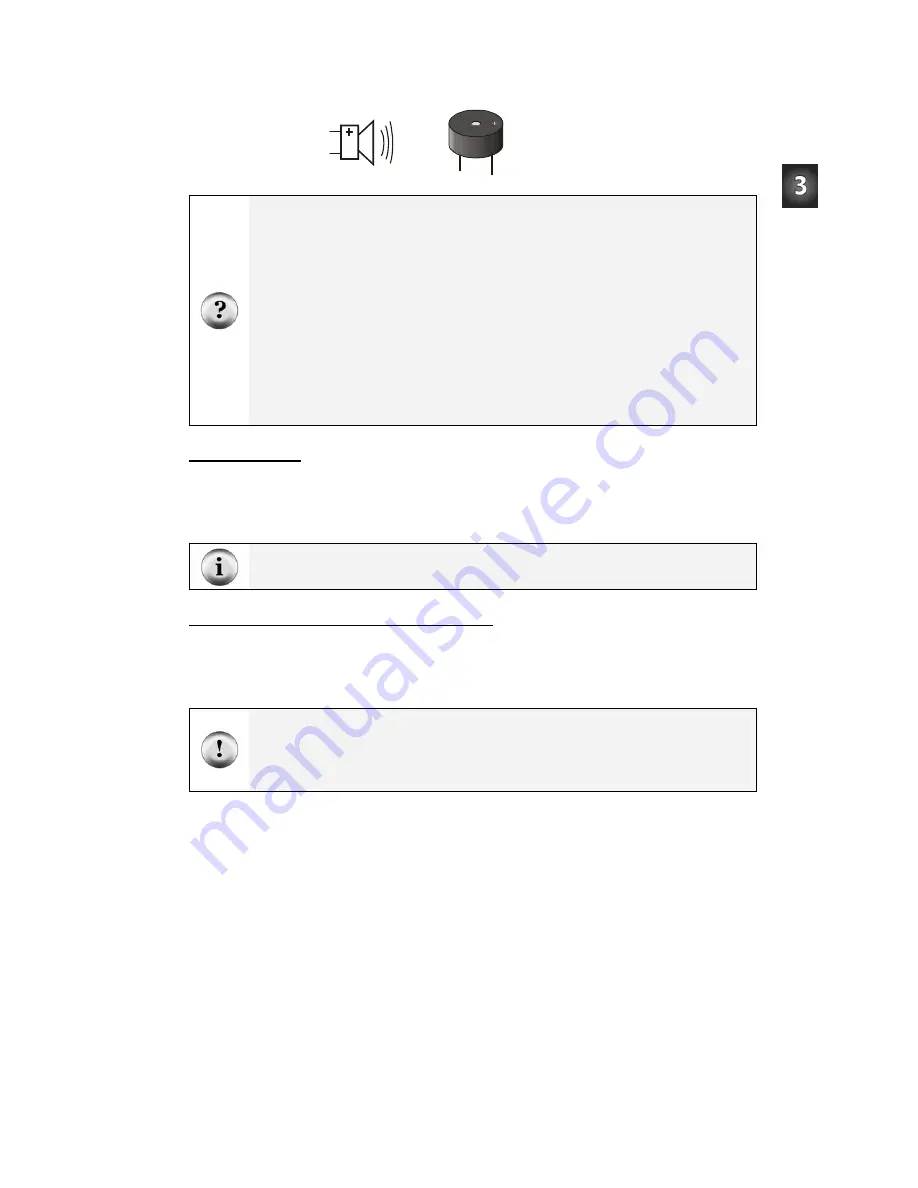
Chapter 3: Assemble and Test Your Boe-Bot
· Page 107
Figure 3-16
Piezospeaker
What’s frequency?
It’s the measurement of how often something occurs in a given amount
of time.
What’s a piezoelectric element and how can it make sound?
It’s a crystal that changes
shape slightly when voltage is applied to it. By applying high and low voltages to a
piezoelectric crystal at a rapid rate, it causes the piezoelectric crystal to rapidly change
shape. The result is vibration. Vibrating objects cause the air around them to vibrate also.
This is what our ear detects as sounds and tones. Every rate of vibration has a different
tone. For example, if you pluck a single guitar string, it will vibrate at one frequency, and
you will hear a particular tone. If you pluck a different guitar string, it will vibrate at a
different frequency and make a different tone.
Note:
Piezoelectric elements have many uses. For example, when force is applied to a
piezoelectric element, it can create voltage. Some piezoelectric elements have a frequency
at which they naturally vibrate. These can be used to create voltages at frequencies that
function as the clock oscillator for many computers and microcontrollers.
Parts Required
(1) Assembled and tested Boe-Bot
(1) Piezospeaker
(misc.) Jumper wires
If your piezospeaker has a label that says “Remove seal after washing” just peel it off and
proceed. Your piezospeaker does not need to be washed!
Building the Start/Reset Indicator Circuit
Figure 3-17 shows piezospeaker alarm circuit schematics for both the Board of Education
and BASIC Stamp HomeWork Board. Figure 3-18 shows a wiring diagram for each
board.
Always disconnect power before building or modifying circuits!
√
If you have a Board of Education Rev C, set the 3-position switch to position-0.
√
If you have a BASIC Stamp HomeWork Board, disconnect the 9 V battery from the
battery clip and remove a battery from the Battery Pack.






























